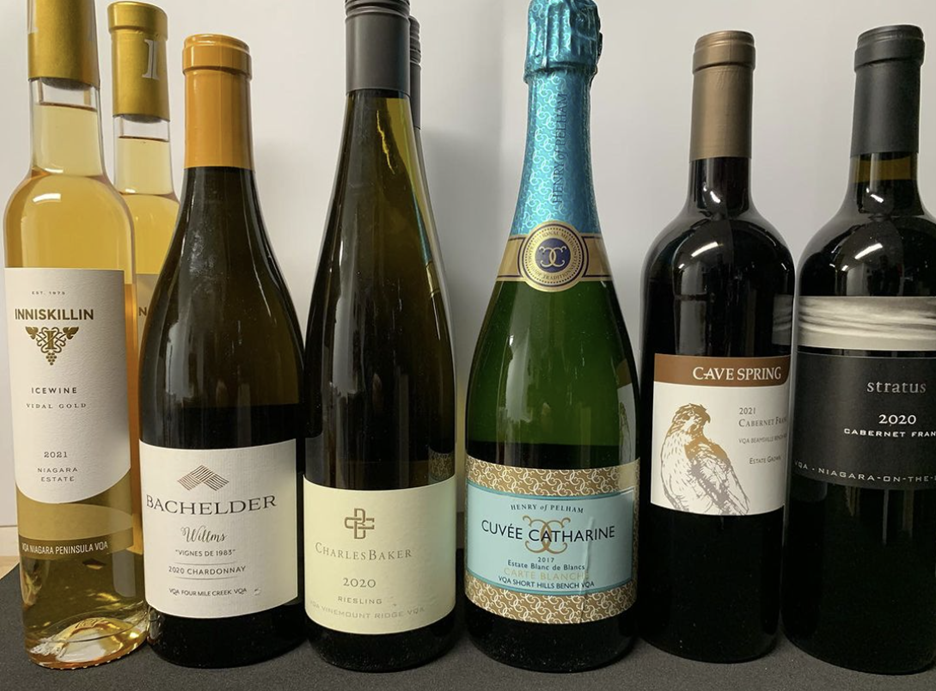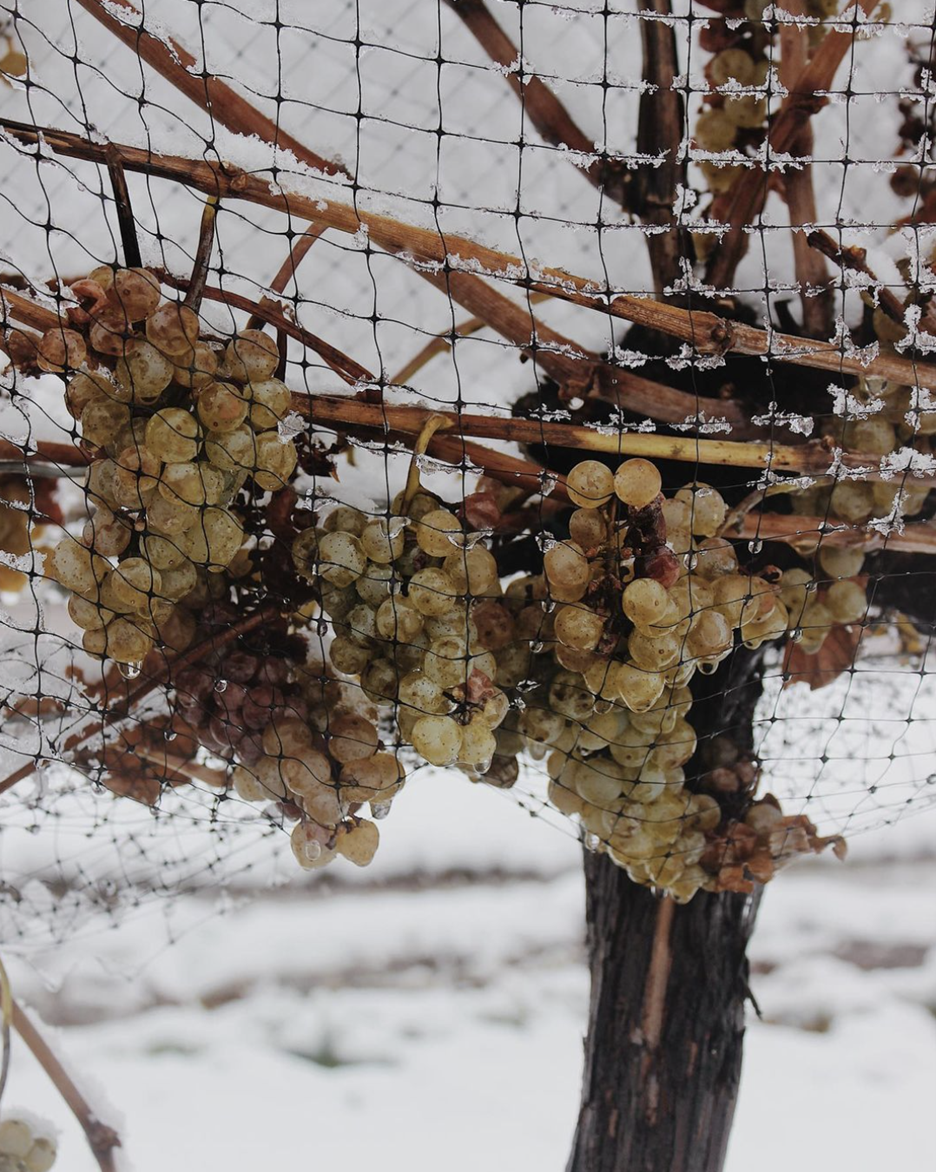
If we play a game of word association, it’s very likely the word “Ice wine” leads us to think “Canada”, and for good reason. But the reality is that Canada’s wine industry goes all the way back to the 1800s, and it has been quietly evolving into a comprehensive high quality producer of wines of different styles.
Gurvinder Bhatia, editor-in-chief of Canadian Food and Drink publication Quench Magazine is a strong advocate for Ontario wines. He commented to Grape Collective on the great progress the industry has achieved in recent years. “There has been a tremendous evolution in the quality of the wines of Ontario over the past several decades, and particularly over the past 10-15 years.” The reasons for this, Batia added, are based on the surprisingly favorable conditions for growing vitis vinifera. “Blessed with outstanding soils, an abundance of sunlight during the growing season, the moderating effect of the Great Lakes and a cool climate that lends itself to growing wines with incredible freshness and depth of flavour, the conditions for producing great wines has existed.”
 Situated between 30 and 50 degrees latitude north, Canada’s wine growing regions unsurprisingly share many familiar traits with cool-climate regions around the world such as Germany (among them is the freezing temperatures during winter). Thanks to this feature, the winemakers, mainly from Ontario, were producing high quality Ice wine since the 1980s, which became such a great success that they were penetrating Asian export markets as far as Japan, China, and Thailand. I can attest to this as I have personally purchased many bottles during my trips there back when I lived in China.
Situated between 30 and 50 degrees latitude north, Canada’s wine growing regions unsurprisingly share many familiar traits with cool-climate regions around the world such as Germany (among them is the freezing temperatures during winter). Thanks to this feature, the winemakers, mainly from Ontario, were producing high quality Ice wine since the 1980s, which became such a great success that they were penetrating Asian export markets as far as Japan, China, and Thailand. I can attest to this as I have personally purchased many bottles during my trips there back when I lived in China.
Throughout the 1990s and 2000s, Canada’s wine scene was linked to (some would say overshadowed by) the lucrative Ice wine category. But not as known to outsiders was the movement in the background in the 1990s by small winemakers to create a quality standard for the wines being produced. The signing of the Canada/USA Free Trade Agreement in 1988 had prompted winemakers and grape growers to experiment and succeed with planting delicate Vitis Vinifera varietals (e.g. Chardonnay, Pinot Noir, etc.) over the durable but less complex hybrid varietals (e.g. Concord) in Canada’s unforgiving winter. Many winemakers could finally produce better quality wines to compete with imported products, but still needed to differentiate themselves from the typical bulk wine then typically found in the domestic market. This gave birth to the Vintners Quality Alliance, or VQA as seen on labels.
What started as Ontario’s broader effort to establish benchmarks for labelling, grape growing, and winemaking, the VQA is now a formal appellation standard, and is even adopted elsewhere; British Columbia, Canada’s second largest wine province, also established it’s own VQA system soon after, largely modeled after Ontario’s. The other two wine producing provinces, Nova Scotia and Quebec, both have their own appellation standard as well.

Thanks to the combination of standardization from the VQA and changing climate conditions, Canada’s winemaking community has encouraged a great number of producers making a wide range of wine styles, utilizing familiar grape varietals such as Chardonnay, Riesling, Pinot Noir, Cabernet Franc, Merlot, and so much more. And while there are four main wine producing provinces, Ontario is possibly the best starting place to become familiar of the possibilities offered, and to experience the shift away from being just an Ice wine producer.
As Canada’s largest and arguably most important wine producing province, Ontario is notoriously known for producing around 90% of Ice wine in Canada. But, for those that are seeking new wines with cool-climate styles, there are countless winemakers doing their best to produce what they feel is an accurate representation of the soil and climate of Ontario, not to mention Canada.
The Niagara Peninsula Designated Viticultural Area (DVA) of Ontario is the largest DVA of the province at 13,600+ ha, and its unique microclimate moderated by Lake Erie and Lake Ontario (achieving growing conditions similar to Burgundy as some publications would claim) allows winemakers to make a variety of dry sparkling, dry white/red still, and of course Ice wine.
Quench’s Batia is optimistic that in the future Ontario will compete with some of the world's best known wine regions. “Ontario’s path to producing great wine (figuring out which grapes will do best in the region, plant based on which varieties do best in specific vineyard sites, focus on viticulture and growing the best quality grapes, allow the wine to reflect vineyard site, and being comfortable having the wines be expressive of the region versus trying to make them taste like they are from France or California or other better known wine regions around the world) has been a decades long process and the positive results have really become evident over the past several years.”
Below are the wines from Niagara Peninsula that were tasted as part of writing this article:
Henry of Pelham, 2017 Cuvée Catharine Blanc de Blancs 'Carte Blanche', Niagara Peninsula
With a history dating back to the late 1700s, Henry of Pelham was one of the founding members of Ontario’s VQA system. They produce a wide range of wines (red, white, and rose), from a wide range of grapes (Pinot Noir, Chardonnay, Riesling, Cabernet Sauvignon, Baco Noir, you name it), in a wide range of styles (dry, sparkling, and Ice wine of course). This top-of-the-line sparkling made by Méthode Champenoise, had the beautiful combination of zesty lemon and toasty aromas on the nose. On the palate, it was dry and refreshing, and the acid from the green apple, lemon, and orange flavors made it a mouthwatering tasting experience as well. Great as an aperitif, or in my case a drink pairing to a movie on a lazy Sunday afternoon.
 Bachelder, 2020 Chardonnay Willms Vineyard ‘Vinges De 1983’, Niagara Peninsula
Bachelder, 2020 Chardonnay Willms Vineyard ‘Vinges De 1983’, Niagara Peninsula
Founded by the couple Thomas and Mary-Delaney Bachelder, Bachelder works with local growers and strives to craft wines with minimal intervention, and are predominantly from Burgundian varietals – Chardonnay and Pinot Noir. This particular bottle, made from Chardonnay vines planted back in 1983, struck me as an elegantly balanced example of what a cool-climate Chardonnay should be. The buttery fragrance on the nose jumped out at me and eventually came with apple and citrus fruit aromas. However, the ripe fruit characters on the palate were center stage, with the acid and minerality providing a strong structure, and a buttery medium-long finish. This might’ve been my favorite.
Charles Baker, 2020 Riesling Vinemount Ridge, Niagara Peninsula
Produced in partnership with the innovative Stratus Vineyards, Charles Baker (also a founding Director at Stratus) works exclusively with Riesling in the Niagara Escarpment. This particular example is an elegant and lean off-dry wine that balances the residual sugar, high acid, and intense green and citrus fruit characters. On the nose, there is a slight petrol note, as often found in Rieslings, but it is dominated by green apples and tart lemons. On the pa late, the fruit lingers as the acid and sugar creates a salivating mouthfeel.
Cave Spring, 2021 Cabernet Franc Estate Grown, Niagara Peninsula
Established in the 1960s, Cave Spring Vineyards was the amongst the first to plant the Vitis Vinifera varietals. Considered by many one of the most important Riesling growers, they plant a wide range of varietals including Chardonnay, Gamay, Pinot Noir and Cabernet Franc. Their estate grown Cabernet Franc is a medium body wine that has straight forward red and dark fruit characteristics, with a hint of bell pepper. However, there is enough tannic structure and leathery aroma in the background showing it is a serious wine.
Stratus, 2020 Cabernet Franc, Niagara Peninsula
Established in 2000 by office furniture designer Teknion’s David Feldberg, Stratus is known as one of the leading innovative wineries in Niagara Peninsula, and their winery is the first building in Canada to achieve LEEDTM (Leadership in Energy and Environmental Design) certification. This Cabernet Franc is an elegant wine that balances the high alcohol (14.7%!) with firm tannins, high acid, wonderful cherry, strawberry, and plum characters, and an undertone of some mint and bell pepper notes that keeps the wine feeling lighter than it is.
Inniskillin, 2021 Icewine Vidal Gold, Niagara Peninsula
Arguably the most important winery in Canada, Inniskillin, established in 1975 by Donald Ziraldo and the late Karl Kaiser, is responsible for launching Canada to become the world’s powerhouse of Ice wine when their Ice wine won the Grand Prix d’Honneur at Bordeaux’s 1991 Vinexpo wine fair. A powerful sweet wine, the combination of honey, peach, and mango creates a full bodied and rich experience, with some acid to help balance the palate. Definitely needs an equally decadent dessert to pair with it.
What have been listed above represents only a small selection of what is available from Ontario. But even with such a small sample size, it’s not hard to believe that the “…styles and quality of the wines of the top producers is on par with the top producers from around the world,” claims Gurvinder Bhatia. “[They have] depth of flavor and immense drinkability and food versatility.”
There are still regions from British Columbia, Nova Scotia, and Quebec that have yet to be explored. And although they are still only exported in small numbers to the US (most producers are naturally smaller scaled, making them less attractive economically to exporters), their quality are absolutely worth the effort to find if you are in the market for new cool-climate wines!











